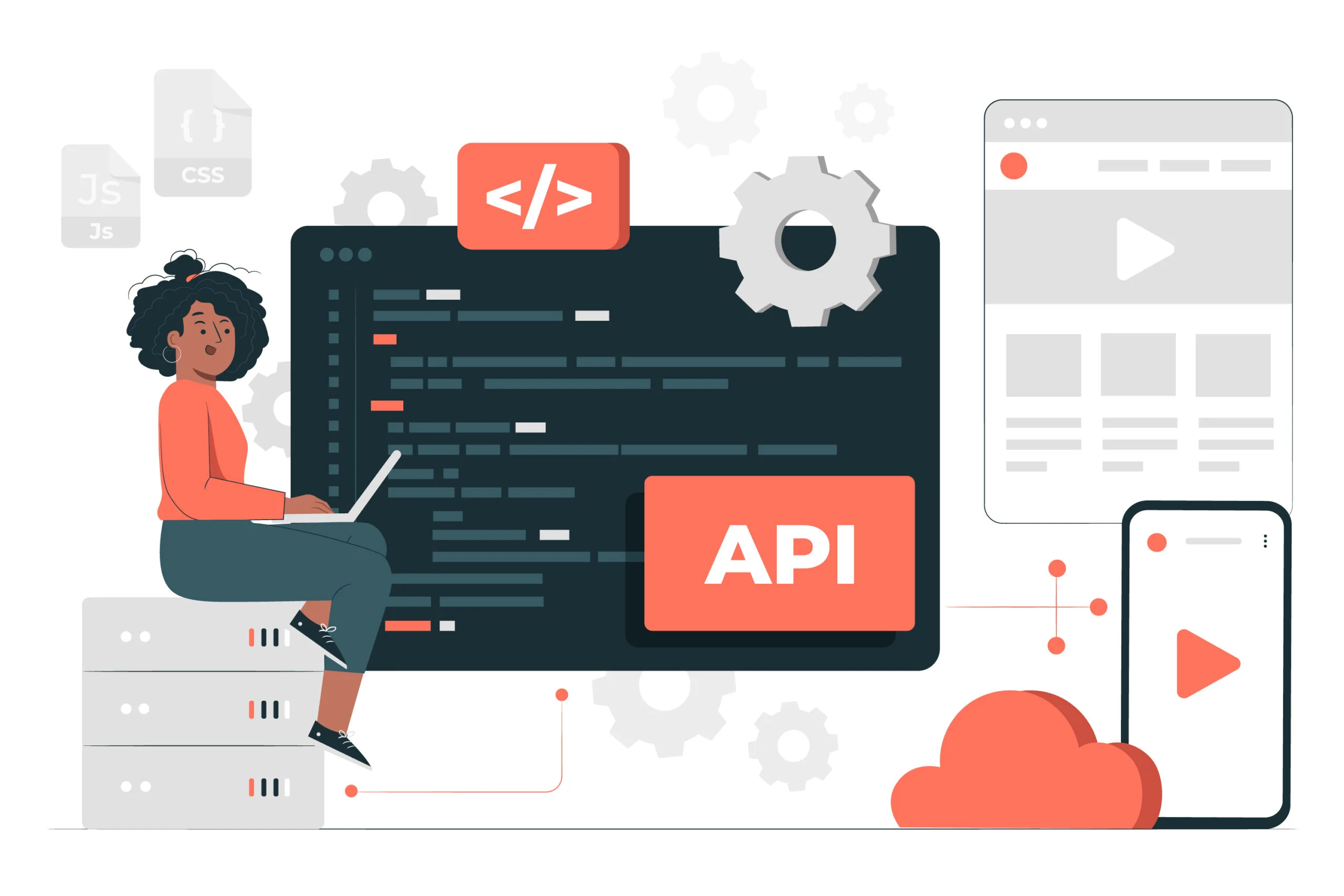Businesses need to be able to streamline their operations. This is especially true in an environment where technology is constantly evolving. API(Application Programming Interface) is the bridge between two software systems. It allows for communication, data sharing, and collaboration between different systems. For example, if you have a web application that needs to query data from a database and display it to the user, you can use an API to call that database directly through your own system. This means that you don’t need to access the database directly — you can just pass requests through an API instead of writing complicated code to connect with another server on your own.
APIs help businesses are more agile and respond more quickly to changes and opportunities. The API is a set of rules that tell the software how to interact with another application. Connecting your software with an API allows you to access tools in real-time, increasing the speed at which you can perform tasks, as well as freeing up resources within your organization so they can be allocated elsewhere where they’re needed most.
How do APIs help businesses?
API integration helps to do more with less time, resources, and money.
APIs help you break down silos between teams and empower your business to be more agile. The fact that APIs are accessible from anywhere means that people can work together without being in the same physical location, and therefore make decisions faster. This is especially important when it comes to responding quickly to changes or opportunities in your market—you won’t have to wait for everyone on the team to be present in order for them all to get their input before making a decision.
Another benefit of using APIs is that they provide a greater level of visibility into how different business units are operating: For example, if there’s an issue with one department’s work that has caused problems for another(such as lost revenue), you’ll be able to identify it sooner rather than later via data analytics tools like Google Analytics(which integrates with many third-party apps) or Sentry, which offers real-time monitoring capabilities across all platforms including web apps, mobile apps, and IoT devices.
Integrating APIs into your business can improve efficiency in several ways:
1. Reduce duplicate data entry between software
2. Improve user experience with better data integration
3. Increase availability and scalability
Breaks down silos and creates a unified brand across channels.
APIs are a way to connect your software with other software, and they’re a great way to break down the walls between different departments or teams that are working on similar tasks. For example, if you manage a sales department, an API could be used as an interface between your CRM(Customer Relationship Management) and accounting software for creating invoices based on data from the sales team’s database. This system would allow both departments to share information more easily than before: instead of creating separate reports or digging through spreadsheets, all necessary information would be available in real-time on one screen at any given time. By using an API for this sort of integration between business functions, businesses can improve their overall efficiency by focusing on their core operations—and avoid unnecessary duplication of effort by sharing resources across departments without having them become dependent upon each other.
APIs Integration Strategy Strengthens the Customer Experience

Customers want to interact with a single brand across all channels, whether it’s through an online store or in-store. APIs can help businesses streamline the customer experience, creating a unified brand across channels. Consumers expect companies to offer consistent experiences across mobile devices and websites.
APIs also help you provide a consistent customer experience. The ease and efficiency with which businesses are able to connect their software programs through APIs mean that your customers will have access to more features than ever before—and they’ll be able to use those features more easily.
Challenges that come with API integration for business.
1. API integration can be complicated and time-consuming. Your organization will need to plan for the technical aspects of integrating APIs into its business processes, as well as determine which data or services it wants to use from each API provider. You’ll also have to create a custom integration layer that handles any data formatting issues between the different systems so that they can communicate with one another effectively.
2. The API integration can be expensive. If your team doesn’t have sufficient knowledge or experience with programming languages like Java or Python, then outsourcing this work could prove costly in terms of both time and money spent training new employees or hiring outside consultants who specialize in working with these technologies.
3. Security planning and testing are important components of API integration, as any successful API integration requires the host application and the connected application to have secure communication between them. Companies need to make sure that they’re prepared for this before attempting an API integration.
4. Companies should make sure they understand what security requirements their applications need, as well as how these requirements could change over time based on changes in technology or business needs. This is especially important when establishing new relationships with third-party vendors, who may use different methods of communication than those that are currently being used within the company itself (i.e., specific network protocols).
5. API security is another issue worth considering before moving forward with your plans for implementing an API strategy within your company: While software vendors usually take steps toward ensuring that their APIs are secure by design when released into production—by adding authentication measures like two-factor authentication(2FA) and using SSL encryption protocols(TLS/HTTPS) across all endpoints—it’s still important for customers using these products to ensure they’re doing everything they can themselves while building out their own implementation strategy.
Ways to use an API for your business.
When you use an API, you can connect your software to a third-party system. This is done in many ways:
1. Connecting your software with a database
2. Integrating with another website or mobile app
3. Communicating data between two programs in real time
Conclusion
Use APIs to connect your software and improve your data’s usefulness. If you’re looking to streamline your business, integrating APIs will help you get there. APIs have many benefits for businesses, but they can also be difficult to implement. The key is to plan carefully and test thoroughly before you dive into API integration. If done right, an API integration can make all the difference in your business—helping you reach new customers and grow faster than ever before!


